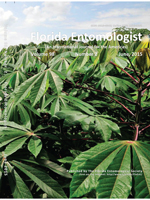The Mediterranean fruit fly (Ceratitis capitata, Wiedemann; Diptera: Tephritidae) is regarded as one of the most destructive insect pests worldwide. It was first detected in Mexico (border with Guatemala) in 1977 after it had spread throughout the Central American region. By 1982, using an area-wide IPM approach that included the Sterile Insect Technique, the Moscamed Program, established by the federal governments of Mexico, Guatemala and USA, succeeded in eradicating the pest from the areas it had invaded in Mexico. Recurrent pest entries in the form of transient detections and outbreaks continue to occur in the southern-most States of Mexico bordering Guatemala. The pest free area status is maintained by eradication actions whose effectiveness is verified by an extensive and intense surveillance network including 24,760 traps. In terms of the International Plant Protection Convention (IPPC), the Mediterranean fruit fly pest status can be defined for most of Mexico as “Pest Absent” (i.e., no records of the presence of the pest confirmed by surveys in 28 States of the 32 States) and as “Pest Transient” (i.e., pest entries that do not result in establishment after applying appropriate phytosanitary measures for their eradication) for the southern border States of Chiapas, Tabasco and Campeche, and for the northern border State of Baja California. The very significant investment that the Government of Mexico has made in the Moscamed Program for over 30 years has been extremely cost-effective (benefit-cost ratio of 112 to 1), when compared to the multi-billion dollar horticultural industry that has developed during this period. In addition through the years, the program engaged its own scientists and scientists in a number of countries and organizations in innovation and optimization of important technologies. These include production techniques for an only male genetic sexing strain, emergence towers, aerial release machines, organic targeted insecticide baits, long lasting bait stations, Phase IV traps and female biased attractants, and use of global positioning systems for data analysis and forecasting and for routing aerial releases. These tools have led to increased program effectiveness and have been adopted in many countries.
How to translate text using browser tools
1 June 2015
Area Freedom in Mexico from Mediterranean Fruit Fly (Diptera: Tephritidae): A Review of Over 30 Years of a Successful Containment Program Using an Integrated Area-Wide SIT Approach
Walther Enkerlin,
José Manuel Gutiérrez-Ruelas,
Antonio Villaseñor Cortes,
Edgar Cotoc Roldan,
David Midgarden,
Estuardo Lira,
Jose Luis Zavala López,
Jorge Hendrichs,
Pablo Liedo,
Francisco Javier Trujillo Arriaga

Florida Entomologist
Vol. 98 • No. 2
June 2015
Vol. 98 • No. 2
June 2015
área libre de plaga
ausencia de plaga
BROTE
Ceratitis capitata
entrada (de plaga)
entry (of a pest)
eradication




